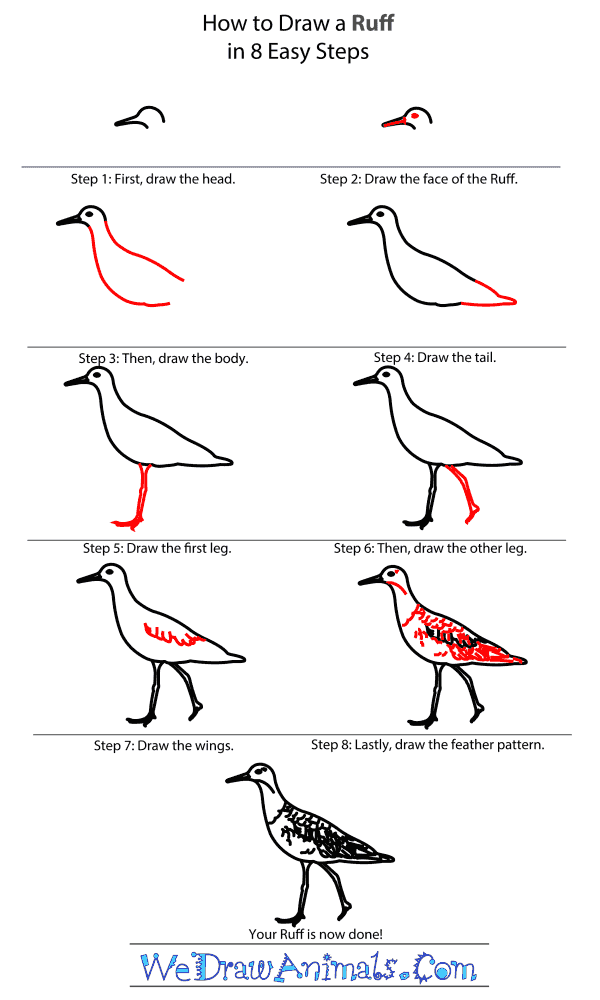In this quick tutorial you'll learn how to draw a Ruff in 8 easy steps - great for kids and novice artists.
The images above represent how your finished drawing is going to look and the steps involved.
Below are the individual steps - you can click on each one for a High Resolution printable PDF version.
At the bottom you can read some interesting facts about the Ruff.
Make sure you also check out any of the hundreds of drawing tutorials grouped by category.
How to Draw a Ruff - Step-by-Step Tutorial
Step 1: First, draw the outline of the head and beak
Step 2: Fill in the beak and make a small dot for the eye
Step 3: Next, draw the body by making two curved lines coming from each side of the neck
Step 4: Draw the bird's tail connecting the two lines with a traingular shape
Step 5: Draw the first leg and foot. The leg is long and has a bumpy shape
Step 6: Now, draw the other leg and foot behind it. Point it in a backward direction to make it look like the bird is walking
Step 7: Draw the wings on the body with some arched squiggly lines
Step 8: Last, draw some lines all over the body to make the feather pattern. Copy the image exactly
Interesting Facts about the RUFF
The Ruff is a member of the bird family and the scientific term for them is Philomachus pugnax. The proper name comes from a term created in 1465 called Ree, which meant “frenzied” and then modified to the word Reeve, because feudal officers were titled Shire-Reeve and wore flamboyant plumage called Ruff in 1634. This 16th Century collar is what the neck of this bird species look like.
Did you know?
- The animal was first documented in 1758.
- They can reach up to over 1 foot in length.
- The bird has a wingspan of almost 2 feet wide.
- They almost weigh up to .5 pounds.
- This species migrates over 9,000 miles away from home.
- The creature was pairs with mates of up to 334 per square mile.
This species has a small head and pot belly for an abdomen and are yellowish orange with white stripes. They wade in the water of colder climates, looking for fish and amphibians to eat. The females are smaller than the males, and only breed for about 1 month of the year. There is not many of these creatures, but they are the least concern for a possibility of extinction.









